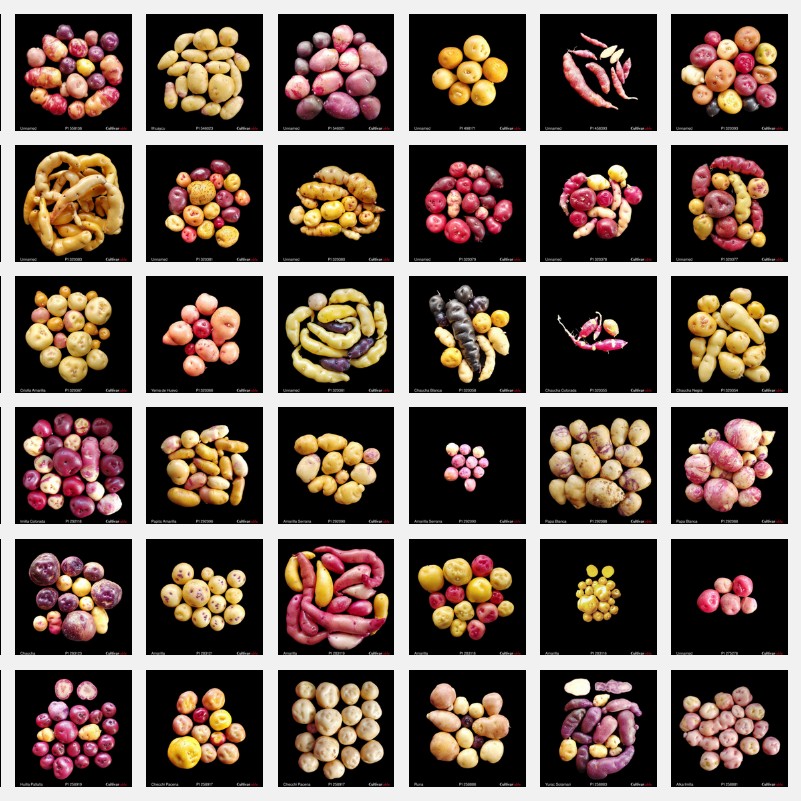No products in the cart.
Mixed True Potato Seeds (TPS), Specialized Mixes
$9.50
Category: Domesticated Potatoes Tags: Advanced TPS, Domesticated Potato Seeds, Seeds, True Potato Seeds
| True potato seed information and growing instructions |
| True potato seeds are classified as breeding seeds and germination is not guaranteed. |
| Some mixes may produce plants with toxic levels of potato glycoalkaloids |
I have a huge library of potato seeds in the freezer, which I can use to make customized mixes. Many of them were requested by customers at some point, particularly mixes that contain varieties native to particular countries. Others highlight traits that I think are interesting. These are mixes that I don’t sell enough of to keep on the shelf. Figure on an extra week of lead time with any of these.
Andean Tetraploids
Similar to our Wide Tetraploid Mix, but without any modern potatoes mixed in. This mix includes accessions from Argentina, Bolivia, Colombia, Ecuador, Peru, and Venezuela. This includes additional Andean accessions for which I didn’t have enough seed to include in the wide mix or that were lower performers. Many will be short day tuberizers, as this is the normal case for Andean potatoes.
Best Colored Flesh Diploids
I mix seeds from 5 to 10 accessions with the best flesh colors that I have at the time you order. These will be the most intense blues, reds, and yellows I have found, often in combination. I don’t consider any other traits, so these may have smaller tubers, lower yields, and late or short day production, but many will have intense yellow, red, or blue flesh.
Blue and Red Tetraploids
A mix of andigena type tetraploids that have produced progeny with uncommon blue and red skin combinations (usually blue skin with red eyes).
Bolivian Diploids
A mix of diploids from Bolivia, mostly high dormancy types.
Bolivian Tetraploids
A mix of andigena type tetraploids from Bolivia.
Chilean Tetraploids
A mix of Chilean tetraploid potatoes. These are mostly male sterile, as is the normal case for Chilean potatoes, but there is a small contribution from male fertile varieties that should be sufficient to keep the population going. Mostly blues and whites with longer than average stolons.
Colombian Diploids
A mix of diploids from Colombia.
Colombian Tetraploids
A mix of andigena type tetraploids from Colombia.
Ecuadorian Tetraploids
A mix of andigena type tetraploids from Ecuador.
Goniocalyx Type Diploids
At times, these potatoes have been classified as S. goniocalyx or S. stenotomum subsp. goniocalyx. In the most current taxonomy, they are treated as S. tuberosum group Andigenum along with all the other Andean potatoes. These potatoes tend to have yellow flesh with a very floury texture and round or fingerling shapes.
Peruvian Diploids
A mix of diploids from Peru.
Peruvian Tetraploids
A mix of andigena type tetraploids from Peru.
Serpentine Tubers
A mix of seeds from accessions in which most of the tubers are long and snake-like. Includes both diploids and tetraploids.
Type A, C, P Cytoplasm Mixes
These mixes include seeds from accessions for which the cytoplasm type has been identified. Includes diploids and tetraploids (and also some seed from pentaploids in the case of type C). Potatoes with these cytoplasm types are usually male fertile. Modern potatoes more commonly have the T and W cytoplasm types that are associated with male sterility. If you want to breed varieties with known cytoplasm types, you can simply use these consistently as the females in crosses and the cytoplasm type will be maintained. There are not significant known advantages in any of these types, but they have been used infrequently in modern potato breeding and they may have unrecognized benefits. There is evidence that C type cytoplasm may confer some resistance to late blight.
Late Blight Resistant Diploids
A mix of seeds from diploid accessions that have demonstrated late blight resistance.
Late Blight Resistant Tetraploids
A mix of seeds from Andean tetraploid accessions that have demonstrated late blight resistance.
Wild Hybrids
A mix of seeds from accessions that are known to be, or appear to be, hybrids with wild potato species. This can be an easier way to add some wild genetics into your breeding without the difficulty of trying to make crosses directly with wild species.
Yellow Flesh Diploids
A mix of the best performing and most consistent yellow fleshed diploid accessions from Colombia to Bolivia.
Only logged in customers who have purchased this product may leave a review.


Reviews
There are no reviews yet.